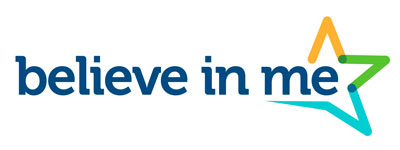Breaking Down Barriers: How Technology Access Empowers Marginalized Youth
Publish Date: July 11, 2025, 0:00
In an era defined by digital innovation, access to technology can mean the difference between opportunity and isolation. Marginalized youth, often left behind by rapid advancements, face a digital divide that further entrenches inequality. But what if technology could transform these challenges into stepping stones? Welcome to a deep dive into digital inclusion, where we explore how ensuring technology access for youth not only bridges the gap but also empowers entire communities. With a mix of humor, hard truths, and hope, this post highlights the critical role of tech in reaching out to those who need it most—and how Believe in Me is working to champion this cause.
Google searches for “digital inclusion”, “technology access for youth”, and “bridging the digital divide” reveal heated debates and frequently asked questions like: How does technology empower marginalized youth? Why is digital inclusion critical for our future? What role do tech companies play in bridging the digital divide? And, how can educators and nonprofits drive actionable change? Our journey, supported by trusted research from Pew Research Center and Digital Promise, uncovers the essential answers.
Overview: How Technology Empowers Marginalized Youth
Technology access for youth goes far beyond having a device; it represents equality in education, economic opportunities, and social inclusion. Digital inclusion enables young people from underrepresented communities to connect with resources, mentors, and skills that are critical in today’s world. It enhances learning through interactive platforms, fosters self-expression, and even encourages civic engagement.
The benefits of digital inclusion are many. As indicated by the Pew Research Center, consistent access to technology can improve academic outcomes, enhance research capabilities, and prepare youth for a workforce that increasingly demands digital literacy (Pew Research Center 2023). At Believe in Me, we have witnessed firsthand how integrating technology into youth programs sparks creativity, builds confidence, and opens up a world of possibilities.
Frequently Asked Questions about Technology Access and Digital Inclusion
- How does technology access empower marginalized youth?
Access to technology provides a platform for self-expression, learning, and skill development that might otherwise be out of reach. It helps youth connect with role models, gain access to global knowledge, and develop critical digital skills. - What is digital inclusion?
Digital inclusion is the effort to ensure that all individuals, regardless of socioeconomic status, geography, or background, have access to the technology and digital tools necessary to succeed in a digital world. - Why is bridging the digital divide important?
Bridging the digital divide is critical for reducing educational and economic disparities. When youth have equal access to technology, they can unlock opportunities in higher education, business, and civic life. - What role do tech companies play in digital inclusion?
Tech companies can drive innovation by providing devices, software, and training programs. Their partnerships can effectively support nonprofits in developing sustainable programs for digital access.
Case Studies of Successful Digital Inclusion Programs
Real-world examples powerfully illustrate the transformative impact of digital inclusion on marginalized youth. Believe in Me continues to collaborate with community leaders and tech companies to foster environments where technology becomes a catalyst for change.
Case Study 1: TechBridge Initiative
The TechBridge Initiative, launched in a low-income community, has redefined access to technology. By partnering with local schools and nonprofits, the program established cyber hubs equipped with modern devices and accessible software. Youth participate in coding boot camps, digital literacy workshops, and creative design classes, learning how to turn digital skills into real-world solutions. This initiative not only improved academic performance but also boosted self-esteem among the participants. One student, Jamal, turned his newfound coding skills into a community-based app that connects local job opportunities with high school graduates – a shining example of technology bridging the gap between education and employment.
Case Study 2: Digital Horizons Program
Another breakthrough program is the Digital Horizons Program, which specifically targets creative digital arts and media. Through interactive workshops and mentorship from professionals in digital storytelling, youth learn to harness technology for artistic expression and social change. The program’s multicultural approach has helped participants amplify voices that are too often marginalized. A standout project involved a multimedia campaign that addressed local environmental issues, fostering civic engagement and empowering participants to influence policy discussions. Believe in Me’s involvement in such initiatives demonstrates how providing technology access not only levels the playing field but also ignites social responsibility.
The Community Impact of Digital Inclusion
The success of these programs is a testament to the broader community impact of digital inclusion. When technology access is democratized, whole communities benefit. Youth with enhanced digital skills contribute to local economies, innovate solutions to local problems, and even bridge generational divides by teaching older community members how to use digital tools.
According to Digital Promise, digital inclusion leads to tangible benefits such as improved healthcare access via telemedicine, increased civic participation through online platforms, and enhanced disaster preparedness (Digital Promise 2023). These benefits underscore why it is essential to dismantle the barriers to technology access and ensure that marginalized youth are not left behind in today’s digital landscape.
Believe in Me is harnessing the power of digital inclusion across multiple projects. Their commitment to offering technology access for youth has led to measurable improvements in educational outcomes and community engagement. By equipping marginalized youth with the tools they need, Believe in Me sets the stage for a future where digital literacy is not a luxury, but a public good.
Actionable Ways to Get Involved
To create lasting change, every stakeholder must act strategically. Tech companies, nonprofit leaders, and educators have crucial roles in supporting digital inclusion initiatives. Here are a few concrete ways you can contribute:
- Partner with Nonprofits: Tech companies can forge partnerships with nonprofits like Believe in Me to sponsor or supply devices and digital training for marginalized youth.
- Advocate for Funding: Lobby policymakers and community leaders to prioritize investments in digital infrastructure and education initiatives.
- Volunteer Your Expertise: Professionals in technology and digital media can volunteer their time for workshops, mentorship programs, or technical support.
- Support Local Programs: Educators and community leaders can integrate digital literacy into school curricula and community centers to ensure long-term benefits.
Every commitment counts. By collaborating across sectors and supporting digital inclusion initiatives, we can bridge the digital divide and unlock the potential of marginalized youth.
Conclusion: Uniting for a Digitally Inclusive Future
In today’s fast-paced world, ensuring technology access for youth is more than an opportunity—it’s a necessity. Digital inclusion facilitates a future where marginalized youth can access education, express creativity, and build bridges across societal divides. As we have seen, initiatives like the TechBridge Initiative and Digital Horizons are not only breaking down barriers but are also sparking measurable community transformation.
Believe in Me stands as a beacon of hope by championing digital inclusion and providing technology access that brings equity and empowerment to underserved communities. The challenge now extends to tech companies, nonprofit leaders, and educators: join forces to expand these initiatives and secure a brighter future for every young individual.
Join the movement. Let’s bridge the digital divide together and empower youth to write a new narrative in this ever-connected world.
Citations: Pew Research Center. “Digital Divide Persists Even as Lower-Income Americans Make Gains in Tech Adoption.” Pew Research Center, 2023; Digital Promise. “The Role of Digital Inclusion in Education and Workforce Development.” Digital Promise, 2023.
Get to know more about Believe in Me and Help a Kid Today
References
Pew Research Center. “Digital Divide Persists Even as Lower-Income Americans Make Gains in Tech Adoption.” Pew Research Center, 2023; Digital Promise. “The Role of Digital Inclusion in Education and Workforce Development.” Digital Promise, 2023.







